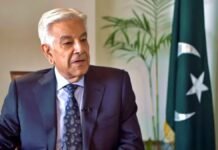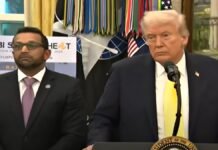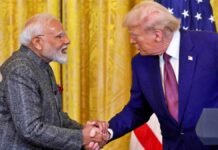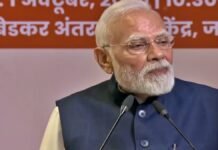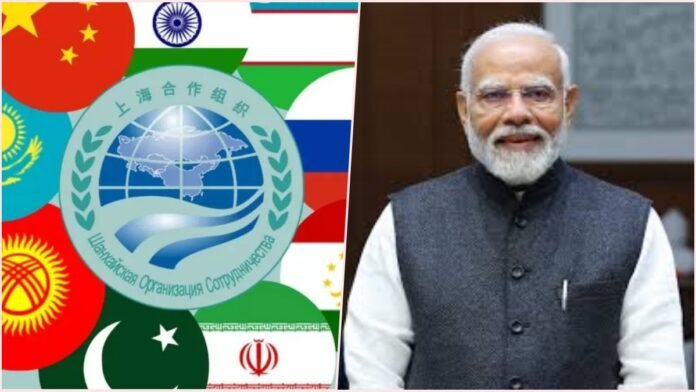
Key Points:
- PM Narendra Modi will visit China from August 31 to September 1, 2025, for the Shanghai Cooperation Organisation (SCO) summit in Tianjin his first trip to China since the 2020 Galwan Valley clash.
- Before China, Modi will visit Japan on August 30 for the annual India-Japan summit with PM Fumio Kishida.
- Relations between India and China deteriorated sharply after the deadly June 2020 Galwan Valley incident, which saw 20 Indian soldiers lose their lives.
- Recent months have seen cautious diplomatic progress: Modi and Xi Jinping last met at the October 2024 BRICS summit in Kazan, moving toward troop disengagement on the border.
- Foreign Minister S. Jaishankar, Defence Minister Rajnath Singh, and NSA Ajit Doval have also engaged in recent bilateral meetings and SCO events in China, showing momentum toward normalization.
New Delhi: Prime Minister Narendra Modi is set for a much-anticipated diplomatic mission, traveling first to Tokyo on August 30 for the annual India-Japan summit, then flying to Tianjin, China, to attend the 25th Shanghai Cooperation Organisation (SCO) Heads of State summit from August 31 to September 1, 2025. This will be Modi’s first visit to China since the Galwan Valley military clashes in eastern Ladakh in June 2020, an event that brought relations between the two Asian giants to their lowest point in decades.
The SCO Summit: High Stakes, Global Watch
The SCO summit in Tianjin will see leaders from across Eurasia including China’s Xi Jinping, Russia’s Vladimir Putin, and Pakistan’s Shehbaz Sharif discussing security, economic, and strategic issues in a rapidly shifting world order. Modi’s in-person participation signals India’s intent to remain engaged in key regional platforms, despite past border frictions and ongoing competition with both China and Pakistan in the grouping.
A possible bilateral meet between Modi and Xi is highly anticipated, following their “breakthrough” discussion in Kazan during the 2024 BRICS summit, where both sides welcomed measures to resolve border disputes and reduce troop presence along the Line of Actual Control (LAC). A renewed Modi-Xi meeting is expected to focus on de-escalation, economic cooperation, and new confidence-building measures.
After Galwan: From Tension to Thaw?
The 2020 Galwan clash resulting in the deaths of 20 Indian and at least 4 Chinese soldiers led to a deep freeze in high-level exchanges, military standoffs, and public mistrust. Since then, both sides have gradually ramped up behind-the-scenes talks, military disengagement at hotspots, and a sequence of official visits. S. Jaishankar’s July 2025 trip to Beijing included bilateral discussions on trade, border management, and terrorism, as well as support for China’s SCO leadership. Defence Minister Singh and NSA Doval’s prior visits focused on regional security and counter-terror coordination within the SCO context.
Jaishankar and his Chinese counterparts recognized signs of a “positive trajectory” toward normalizing relations, with statements highlighting mutual respect, dialogue, and the need to avoid letting “differences become disputes”.
Why Modi’s Visit Matters Now
- Symbolic Reset: Modi’s decision to revisit China after five years specifically as part of an important multilateral forum—shows both caution and a willingness to re-engage, reflecting months of careful groundwork.
- Strategic Messaging: New Delhi’s move comes at a time of elevated global tensions, with the US imposing new trade tariffs and questioning the BRICS nations’ Russian oil purchases. By participating at top-level summits in both Tokyo and Tianjin, India signals its commitment to a multipolar strategy and regional partnerships.
- India-China Roadmap: Talks are likely to address unresolved border issues, economic normalization, and multilateral cooperation while differences (LAC, trade) will remain.
Diplomatic Watchpoints
- Will a Modi-Xi one-on-one yield new border disengagement steps?
- How will the SCO address terrorism and “zero tolerance” of its perpetrators, a topic of friction between India, China, and Pakistan?
- Will Japan and India issue new statements strengthening the Indo-Pacific partnership just before Modi flies to Tianjin?
Prime Minister Modi’s China visit for the SCO summit on August 31–September 1 is a landmark move, promising to shape the next phase of India-China ties four years after the Galwan shock and in the shadow of global power shifts. It highlights India’s dual-track diplomatic approach: carefully managing contentious issues with China while deepening cooperation with Japan and international platforms.






